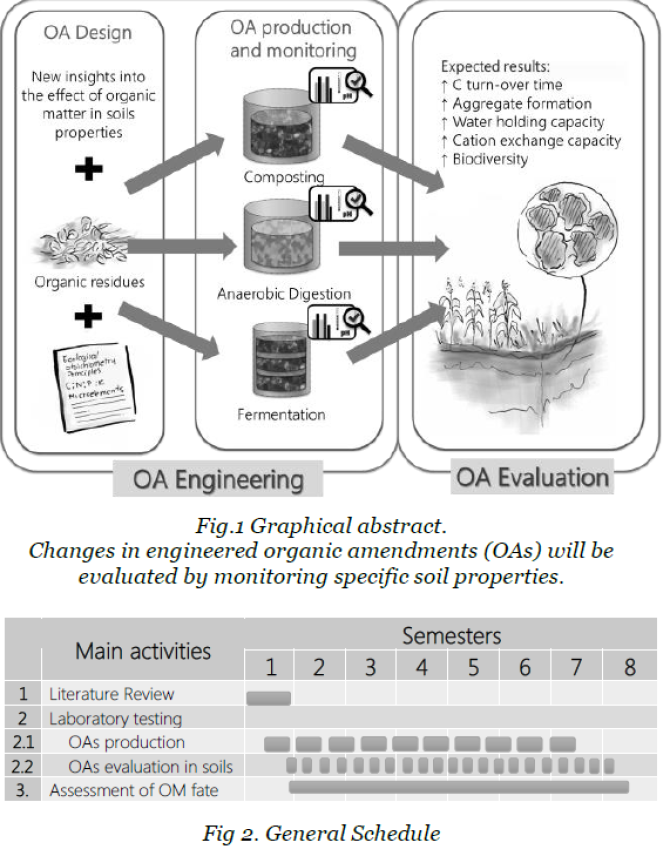
Project
Organic residues engineering to increase organic matter in agricultural soils
In the European Union, 970 Tg of soil is lost annually [1]. Despite the policy interventions, such as the “Common Agricultural Policy” and “Soil Thematic Strategy”, soil erosion rates are 1.4 higher than soil formation rates [1][2]. One of the most important driving factors of soil erosion is organic matter decline [3]. Ironically, only about one third of the total bio-waste is used to replenish the organic carbon losses [3]. By using organic residues engineering, we could use these residues to produce organic amendments (OA) to improve specific soil functions according the requirements of each specific case.
In the European Union, 970 Tg of soil is lost annually [1]. Despite the policy interventions, such as the “Common Agricultural Policy” and “Soil Thematic Strategy”, soil erosion rates are 1.4 higher than soil formation rates [1][2]. One of the most important driving factors of soil erosion is organic matter decline [3]. Ironically, only about one third of the total bio-waste is used to replenish the organic carbon losses [3]. By using organic residues engineering, we could use these residues to produce organic amendments (OA) to improve specific soil functions according the requirements of each specific case.
Technological challenge
New insights on OA engineering are required to increase its efficacy, efficiency and effectivity. For example, different technologies are used to produce OAs. Each technology yields OAs with different chemistry. It is unknown to what extent OA chemistry is modulated by these technologies and what effects these OA have on soil properties. The main technological challenges will be to:
- Assess the influence of engineered OAs on soil properties.
- Identify potential improvements for the design of OAs.
- Modify operational parameters or/and system configurations to produce the designed OAs.
- Identify strategies that involve engineered OAs to steer specific groups of microorganisms. This will be done by applying ecological stoichiometry principles towards the production of compounds leading to stable organic matter formation

[1] Panagos, P., & Borrelli, P. (2017). Soil erosion in Europe: Current status, challenges and future developments | EU Science Hub. Retrieved January 15, 2019
[2] Verheijen, F. G. A., Jones, R. J. A., Rickson, R. J., & Smith, C. J. (2009). Tolerable versus actual soil erosion rates in Europe. Earth‐ Science Reviews, (94), 23–38.
[3] Middleton, N., & Thomas, D. S. G. (1997). World Atlas of Desertification. United Nations Environment Programme (UNEP) - University of Sheffield, UK (Vol. 2).
*This project has received funding from the European Union’s Horizon 2020 research and innovation programme under the Marie Skłodowska-Curie grant agreement No 665874